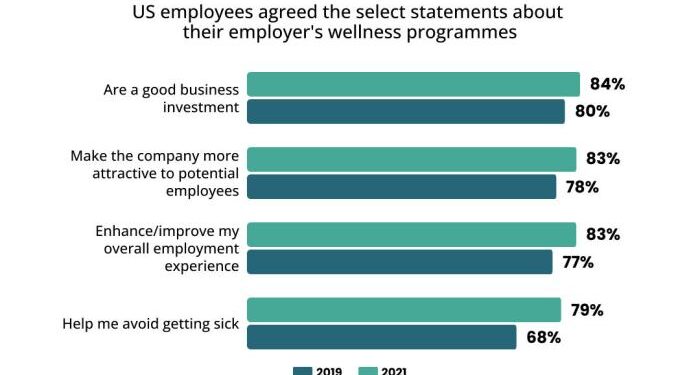Exploring the realm of Workplace wellness programs that boost productivity, this introduction sets the stage for a deep dive into the strategies and benefits of these programs. With a focus on enhancing workplace well-being and productivity, this narrative aims to inform and inspire readers on the significance of implementing such initiatives.
As we navigate through the different types of programs, benefits, and strategies for effective implementation, the following paragraphs will shed light on the essential aspects of workplace wellness and its impact on organizational success.
Definition of Workplace Wellness Programs
Workplace wellness programs are initiatives implemented by organizations to promote the overall health and well-being of their employees. These programs aim to improve employees' physical, mental, and emotional health, leading to increased productivity, reduced absenteeism, and enhanced morale in the workplace.
Objectives of Workplace Wellness Programs
- Enhance employee health and well-being
- Reduce healthcare costs for both employees and employers
- Boost employee morale and engagement
- Increase productivity and performance
Common Components of Workplace Wellness Programs
- Health screenings and assessments
- Physical fitness activities and challenges
- Nutrition and healthy eating workshops
- Mental health resources and counseling services
- Stress management programs
- Smoking cessation support
Benefits of Workplace Wellness Programs
Workplace wellness programs offer a wide range of benefits that contribute to boosting productivity and enhancing employee morale.
Increased Productivity
Implementing workplace wellness programs can lead to increased productivity among employees. When employees are physically and mentally healthy, they are more focused, energetic, and engaged in their work. This results in higher levels of productivity and efficiency in the workplace.
Enhanced Employee Morale
Wellness programs have a positive impact on employee morale by showing that the organization cares about the well-being of its employees. This can lead to increased job satisfaction, higher levels of motivation, and a more positive work environment. Employees who feel supported in their overall health and well-being are likely to be happier and more engaged in their work.
Statistics and Case Studies
According to a study by the American Psychological Association, companies with workplace wellness programs reported lower healthcare costs, reduced absenteeism, and increased productivity among employees. Additionally, a case study conducted by Harvard Business Review found that implementing wellness programs led to a 25% reduction in absenteeism and a 40% decrease in employee turnover.
Types of Workplace Wellness Programs
Workplace wellness programs come in various forms, each designed to address different aspects of employee well-being and boost productivity.
Physical Wellness Programs
- On-site fitness classes or gym memberships
- Healthy eating initiatives or weight management programs
- Ergonomic assessments and equipment for better posture and comfort
Mental Health and Stress Management Programs
- Mindfulness and meditation sessions
- Counseling services or Employee Assistance Programs (EAP)
- Workshops on work-life balance and stress reduction techniques
Financial Wellness Programs
- Financial planning seminars or webinars
- Retirement planning assistance
- Debt management resources
Social Wellness Programs
- Team-building activities or social events
- Volunteer opportunities in the community
- Mentorship programs for professional development
Examples of Companies Implementing Successful Wellness Programs
Companies like Google, Microsoft, and Salesforce are known for their comprehensive wellness programs that cater to various aspects of employee well-being. Google, for example, provides on-site fitness centers, healthy food options, and mental health support services to promote a healthy work environment.
Microsoft offers financial wellness programs and stress management resources to help employees manage their well-being effectively. Salesforce focuses on social wellness by encouraging team-building activities and community engagement initiatives.
Strategies for Implementing Effective Wellness Programs
Implementing an effective wellness program in the workplace requires careful planning and execution to ensure maximum engagement and impact
Designing a Customized Program
- Conduct a needs assessment to identify the specific wellness needs and interests of employees.
- Develop wellness initiatives that align with the goals and values of the organization.
- Consider the demographics and work culture of the organization when designing the program.
Engaging Employees
- Communicate the benefits of the wellness program to employees and encourage participation.
- Utilize multiple communication channels to reach a diverse workforce.
- Offer incentives or rewards to motivate employees to participate in wellness activities.
Promoting Participation
- Provide flexible scheduling to accommodate employees' participation in wellness activities.
- Create a supportive environment that encourages employees to prioritize their health and well-being.
- Evaluate the effectiveness of the program regularly and make adjustments based on feedback from employees.
Measuring the Impact of Workplace Wellness Programs

Employee wellness programs can have a significant impact on productivity, but it's essential to measure their effectiveness to ensure they are achieving the desired outcomes. By implementing various methods for measurement and analyzing key performance indicators (KPIs), organizations can gain valuable insights into the ROI of their wellness initiatives.
Methods for Measuring Effectiveness
- Surveys and Feedback: Collect feedback from employees to gauge their satisfaction with the wellness programs and identify areas for improvement.
- Health Assessments: Conduct regular health assessments to track changes in employee health and well-being over time.
- Absenteeism and Turnover Rates: Monitor absenteeism and turnover rates to see if there are any improvements after implementing wellness programs.
Key Performance Indicators (KPIs)
- Employee Engagement: Measure the level of participation and engagement in wellness activities to assess the program's impact.
- Health Outcomes: Track changes in health metrics such as blood pressure, cholesterol levels, and BMI to evaluate the effectiveness of wellness initiatives.
- Productivity Metrics: Analyze productivity data such as output, quality, and efficiency to determine if wellness programs are positively impacting performance.
Analyzing Data for ROI
- Cost Savings: Calculate the cost savings from reduced healthcare expenses, absenteeism, and turnover resulting from wellness programs.
- Productivity Gains: Measure the increase in productivity and performance against the investment made in wellness initiatives to determine the ROI.
- Employee Retention: Assess the impact of wellness programs on employee retention rates and turnover costs to understand their long-term value.
Ultimate Conclusion
In conclusion, Workplace wellness programs that boost productivity have emerged as integral tools for fostering a healthy work environment and maximizing employee performance. By prioritizing employee well-being and engagement, organizations can unlock a higher level of productivity and overall success.
Frequently Asked Questions
What are the typical objectives of Workplace Wellness Programs?
Workplace wellness programs aim to improve employee health, enhance productivity, reduce absenteeism, and boost morale.
How do wellness programs impact employee morale?
Wellness programs can positively impact employee morale by creating a supportive work environment, promoting work-life balance, and reducing stress levels.
What are some key performance indicators used to evaluate the success of wellness programs?
Key performance indicators may include metrics like employee participation rates, health improvements, and productivity levels before and after program implementation.










